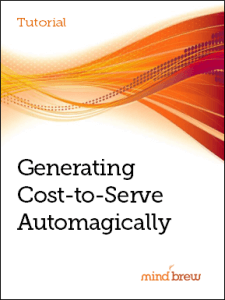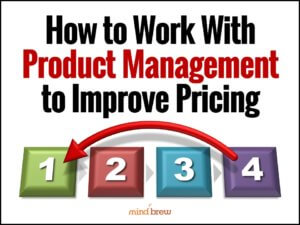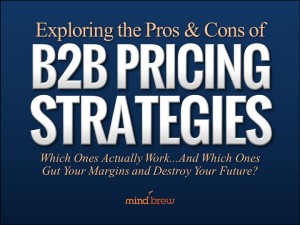Do you like surprises?
It probably depends on the surprise, right? If the surprise is an unexpected $10,000 holiday bonus or a shiny new Maserati in your driveway, that’s awesome. But what if the surprise is an unexpected $10,000 bill you have to pay or a car that breaks down? Suddenly a surprise doesn’t seem so great.
When it comes to pricing, most B2B companies are terrified of surprises. If you suggest a pricing change—any pricing change—you’ll probably get pushback from sales and management. They don’t know what’s going to happen if you adjust prices, and they really, really, really don’t want any negative surprises. So they’d rather that you don’t make any changes at all.
The problem, of course, is that they are also eliminating the possibility of a positive surprise. Maybe your customers are willing to pay more for your products. Maybe a small price increase isn’t going to depress sales. Maybe that price increase will actually even increase sales. You’ll never know unless you can get past the fear.
But what if you could eliminate the surprises and still make pricing changes?
There’s a technique that can allow you to see in advance what impact your pricing changes will have before you make them. It drastically reduces the likelihood of nasty surprises while letting you take advantage of positive results whenever possible.
It’s called price elasticity. And in our opinion, it’s the most powerful and underutilized tool in the B2B pricing arsenal.
A lot of B2B pricing practitioners mistakenly think that price elasticity only applies to B2C sales. After all, the traditional definition of elasticity is all about increasing demand by changing a product’s price. In B2B, you probably can’t increase demand for a product by changing its price, but you can certainly change your win rates. For B2B, price elasticity is all about figuring out how your pricing changes will affect the amount of business you are winning relative to your competitors.
That might sound complicated, but it’s not as hard as it seems. The formulas are actually pretty easy to figure out if you have historical data available.
You also need to have a good segmentation model in place. Some customers are naturally going to be more reactive to pricing changes than others, and you need to have a good understanding of which characteristics set certain customers apart from others.
But if you do the calculations and the segmentation well, price elasticity can be an amazing tool. It can eliminate the paralyzing fear that prevents too many companies from making pricing changes that would actually be very beneficial for them.
If you’d like to learn more about this concept, we recommend the webinar Business-to-Business Price Elasticity. It offers a good introduction to the fundamentals and gives you valuable tips to help you get started analyzing this extremely valuable metric.














